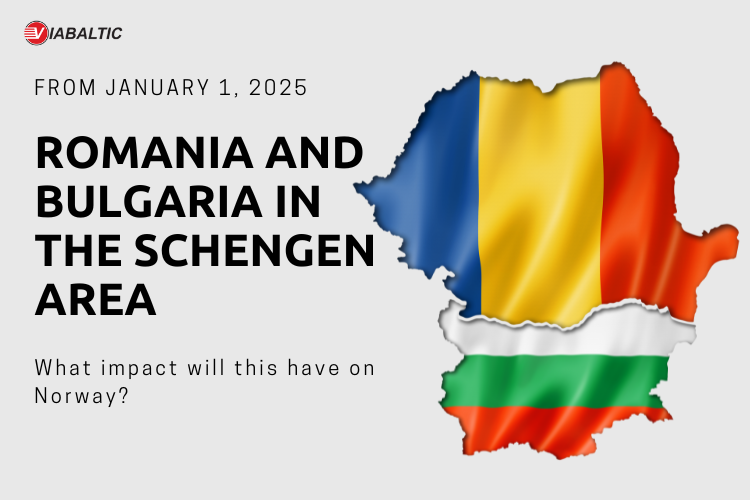Romania and Bulgaria in the Schengen Area
What impact will this have on Norway?

On January 1, 2025, border controls at land borders with Bulgaria and Romania were lifted. Both countries have been striving for full Schengen membership since joining the European Union in 2007.
Upon joining the EU, Romania and Bulgaria adopted parts of the Schengen regulations, including those related to external EU border controls, police cooperation, and the use of the Schengen Information System.
In late December 2023, EU member states decided to implement the remaining Schengen provisions in these countries and to lift internal border controls within the EU starting January 1, 2025.
What impact could Bulgaria and Romania’s Schengen membership have on Norway?
Romania and Bulgaria, as Schengen members, will be able to move freely within the entire Schengen Area, including Norway. This could mean:
- Increased inflow of workers from Romania and Bulgaria, potentially impacting the Norwegian labor market.
- No internal border controls within Schengen, this could raise Norway’s concerns about illegal migration, human trafficking, and organized crime. As a result, Norway might take steps to strengthen its external borders and conduct more frequent vehicle inspections at its borders.
Impact on freight transport
While there are consequences for freight transport, certain limitations remain.
1. Movement of goods and customs clearance
- The Schengen Area allows the free movement of people but does not eliminate customs clearance, as customs matters are regulated under the EU Customs Union, which Norway is not a part of.
- Goods imported into Norway from EU countries, including Romania and Bulgaria, will still be subject to Norwegian customs regulations, and customs clearance will be required at the Norwegian border.
2. Potential reduction in transportation costs
Romania and Bulgaria’s Schengen membership could reduce transportation costs for several reasons:
- No border checks within Schengen: Truck drivers no longer need to wait at borders between these countries and other Schengen members, reducing transport time and operational costs (e.g., fuel, parking fees).
- Increased competition: Greater availability of Romanian and Bulgarian carriers in the European market could lower transport rates due to price competition.
3. Impact on transportation time and quality
- Faster transport within the EU could improve the timeliness of deliveries to Norway, which is crucial for perishable goods like food or pharmaceuticals.
- Lower transportation costs within the EU could benefit Norwegian importers and exporters if Romanian and Bulgarian carriers offer more competitive rates.
Summary of transport impact between Norway and Romania/Bulgaria
- Customs clearance will still be required at Norwegian borders.
- Transport costs may decrease due to improved logistics within the EU and increased competition.
- Delivery times may shorten thanks to the elimination of border delays within the EU.
Overall impact on Norway
The main effects on Norway may relate to migration, the labor market, and logistics, but these changes are not expected to revolutionize Norway’s situation directly.
Schengen Area Overview
Schengen is the world’s largest free travel zone. Border controls were first lifted in 1985 between France, Germany, Belgium, the Netherlands, and Luxembourg. Today, the zone includes 29 countries (25 of the 27 EU members, as well as Iceland, Liechtenstein, Norway, and Switzerland), with a combined population of 420 million people. Internal border controls with Cyprus have yet to be removed, and Ireland is not a Schengen member.
